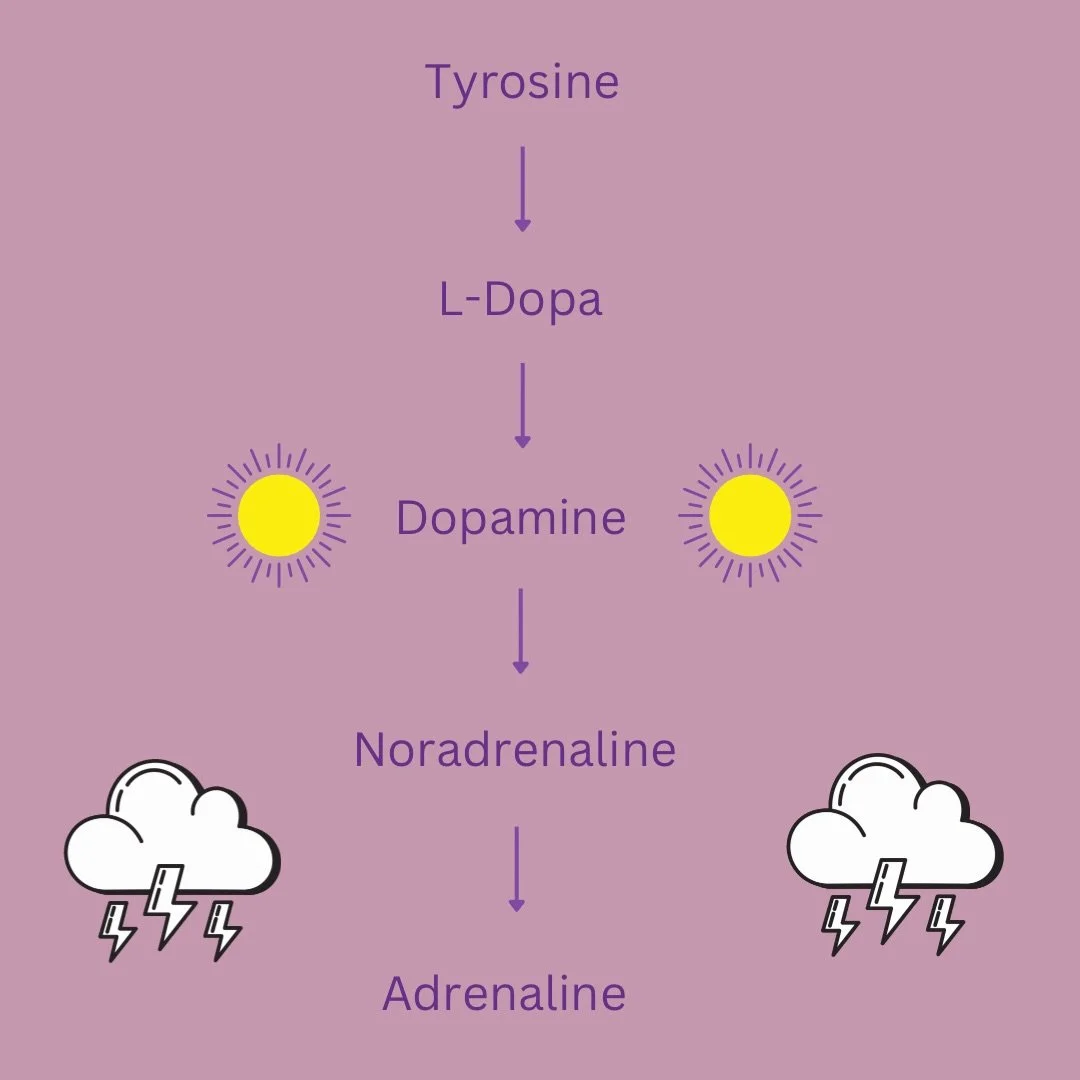How to support your mood #5: build a wall around your dopamine.
Dopamine is your pleasure and motivation hormone.
Signs of low dopamine include:
- Feelings of worthlessness and hopelessness,
- Self-destructive thoughts,
- Loss of ability to handle stress,
- Responding to stress with anger and aggression,
- Still feeling tired after many hours of sleep,
- A desire to isolate yourself from others,
- Loss of ability to finish off tasks, and
- Feelings of anger for minor reasons.
How is adrenaline, the stress and panic hormone, made?
From dopamine.
This is powerful knowledge: to protect your pleasure and motivation hormone, inhibit your stress response.
How?
Do what brings you joy. Focus on what makes you laugh.
This is so personal: allow yourself some space to consider what could be your effective go-to if you need to quash a mounting stress or anxiety response.
Breathwork can be a very powerful tool to deploy here. You might just step away from the provocation (if necessary barricade yourself in the bathroom!) and perform a quick box breathing exercise: inhale for 4, hold for 4, inhale for 4, hold for 4 and repeat as many times as you need.
You might go for a walk around the block, listening to a funny audio book.
You might watch the episode of Derry Girls where they perform as the Spice Girls.
You might cuddle your dog, your bunnies or a willing child.
You might listen to your favourite song.
It doesn’t matter what it is. What matters is that you have a clear plan to put into action that will build a wall around your dopamine and not permit it be converted into the stress and panic hormones.
If your dopamine manages to hang around a bit longer, then you could start to move away from the feelings I listed at the beginning. Please have a go and let me know how you get on.
Sources:
Rubí, B. and Maechler, P. (2010) “Mini review: new roles for peripheral dopamine on metabolic control and tumor growth: let’s seek the balance”, Endocrinology, 151(12), pp. 5570-5581.

